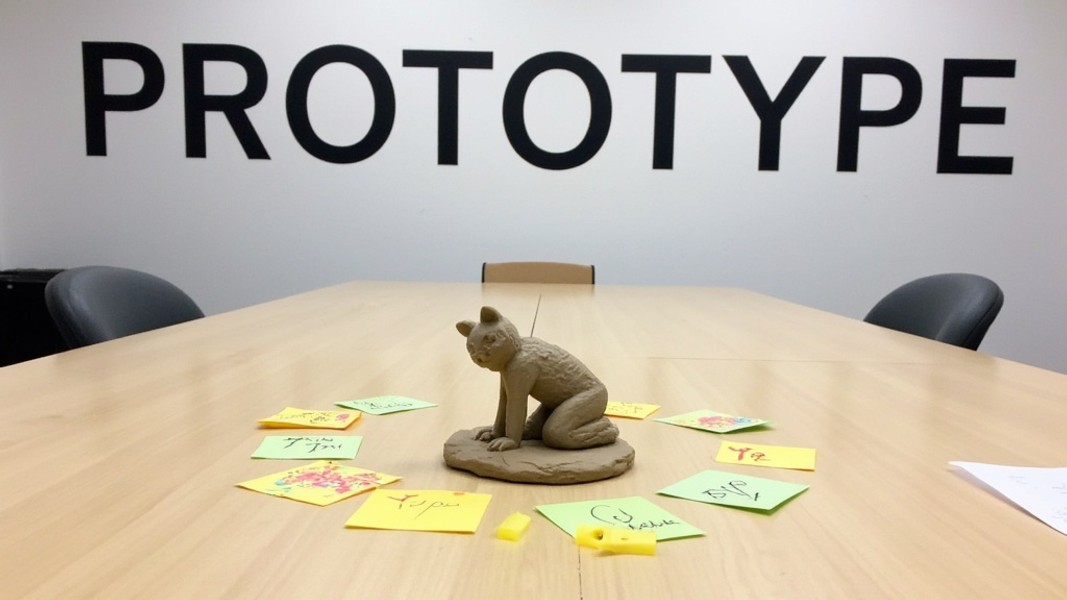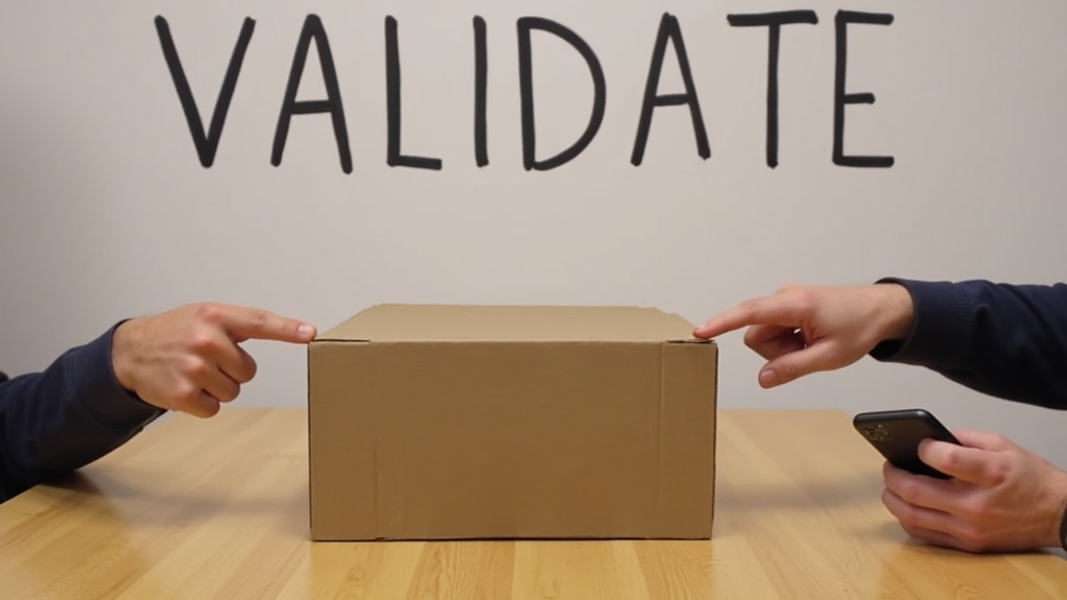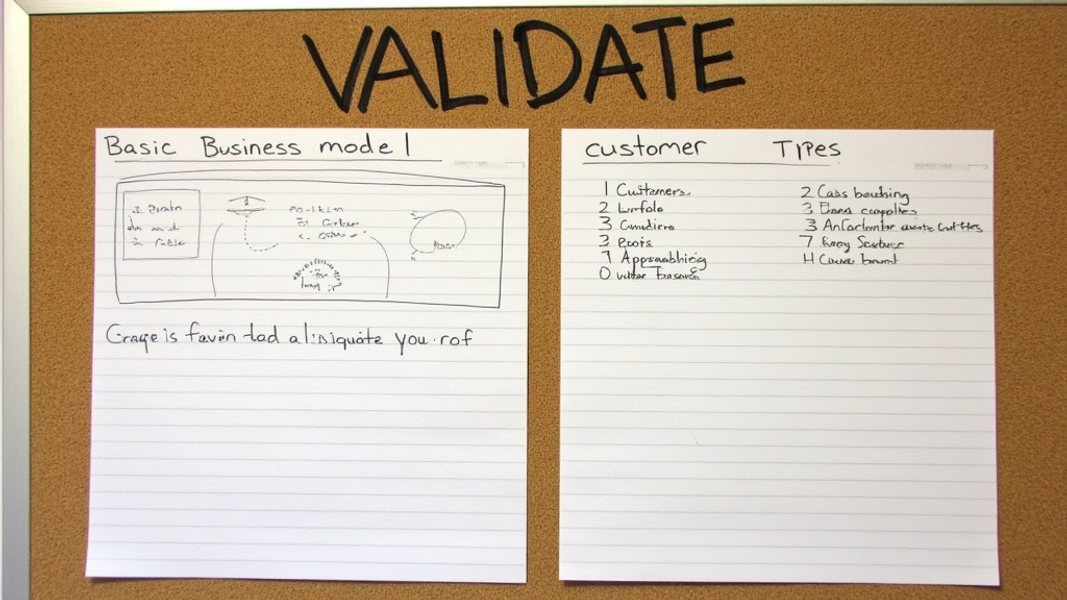
Have you ever wondered why some startups take off while others crash and burn? The secret often lies in how well founders test their ideas before launching. This guide will show you how to validate your startup concept, saving you time and money. We'll cover proven methods to check if your idea has real potential, with examples from successful companies.
Understanding Startup Validation
What is startup validation?
Startup validation is the process of testing your business idea to see if it solves a real problem and if people will pay for it. It's like a trial run before you invest a lot of time and money. Think of it as a way to make sure you're building something people actually want, not just something you think is cool.
Validation helps you avoid the common mistake of creating a product no one needs. It's a key step that many successful startups use to improve their chances of success. By talking to potential customers and testing your ideas, you can find out if you're on the right track or if you need to change direction.
Why validation matters
Validation is crucial because it can save you from wasting resources on an idea that won't work. It's much better to find out early if your idea has problems than after you've spent months or years building it. This process can also help you refine your idea and make it better.
Investors like to see that you've validated your idea. It shows them you're serious and have done your homework. Validation can give you confidence in your idea and help you explain it better to others. It's a way to reduce risk and increase your chances of building something people will use and pay for.
Three Approaches to Finding a Startup Idea
Market-first approach
The market-first approach starts with looking at a specific industry or group of people. You might pick a market you know well or one that interests you. Then, you dig deep to find problems in that market that need solving.
For example, if you're interested in the fitness industry, you might talk to gym owners, trainers, and gym-goers to find out what frustrates them. You could discover that many people struggle to stick to their workout plans. This insight could lead to an idea for an app that helps people stay motivated and track their progress.
Experience-driven approach
This approach comes from your own life experiences. You might notice something that's annoying or difficult and think, "There has to be a better way to do this." It's about looking at everyday situations and seeing opportunities to make things easier or better.
Airbnb is a great example of this. The founders had trouble paying their rent and noticed that hotels in their area were always full during big events. They saw an opportunity to help people find places to stay and make some extra money. They started by renting out air mattresses in their own apartment, and from there, the idea grew into a global business.
Problem-first approach
The problem-first approach starts with a specific issue you've faced. You then try to figure out if other people have the same problem and if they'd pay for a solution. This method often leads to very focused ideas because you're solving a real problem you understand well.
Dropbox came from this approach. The founder, Drew Houston, kept forgetting his USB flash drive and thought there should be an easier way to access his files from anywhere. He created Dropbox to solve his own problem, and it turned out millions of other people had the same issue.
5 Key Steps to Validate Your Startup Idea
1. Conduct thorough market research
Start by learning everything you can about your market. Look at who your competitors are and what they offer. Find out how big the market is and who your potential customers might be. Use tools like Google Trends to see if interest in your topic is growing or shrinking.
Talk to experts in the field and read industry reports. This research will help you understand if there's room for your idea and what challenges you might face. It's also a good time to start thinking about how your idea is different from what's already out there.
2. Create a problem hypothesis
A problem hypothesis is a clear statement of the issue you think your startup will solve. It should explain who has the problem, what the problem is, and why it's important to solve it. For example: "Young professionals in big cities struggle to find affordable, healthy meal options during busy workweeks."
Write down how you'll know if your hypothesis is right. Maybe you'll aim to find that at least 7 out of 10 people you talk to say they have this problem and would pay for a solution. Having clear goals will help you know when you've validated your idea.
3. Interview potential customers
Talking to potential customers is one of the most important parts of validation. Set up interviews with people who fit your target market. Ask them about their experiences, frustrations, and how they currently solve the problem you're addressing.
Be careful not to lead the conversation. Instead of asking "Would you use an app that does X?", ask "How do you currently handle X?" This gives you more honest and useful information. Keep track of what people say and look for patterns in their responses.
4. Build a minimum viable product (MVP)
An MVP is a basic version of your product that has just enough features to see if people will use it. It doesn't have to be perfect or have all the bells and whistles. The goal is to create something quickly that you can test with real users.
For a software product, this might be a simple app with core features. For a physical product, it could be a prototype or even a detailed mockup. The key is to have something tangible that people can interact with and give feedback on.

5. Test and iterate
Once you have your MVP, it's time to test it with real users. Watch how people use it and ask for their honest feedback. Pay attention to what features they like, what confuses them, and what they wish the product could do.
Use this feedback to make improvements. This might mean adding new features, changing how things work, or even rethinking parts of your idea. The goal is to keep making your product better based on what real users tell you they need and want.
It's important to know when to keep going and when to change direction. If most people aren't interested in your product or if you can't find a way to make it work, it might be time to try a different idea. But if you're seeing positive responses and people are excited about what you're building, that's a good sign to keep going.
Case Studies: Successful Startup Validation Stories
Airbnb's early validation techniques
Airbnb's founders started small to test their idea. They created a simple website to rent out air mattresses in their apartment during a big design conference. This let them see if people would actually use the service and gave them a chance to talk to their first customers face-to-face.
They learned a lot from this experiment. They found out what kinds of problems hosts and guests had and what features they needed to add. This hands-on approach helped them improve their idea and gave them confidence that people wanted what they were offering.
Dropbox's famous explainer video
Dropbox took a different approach to validation. Instead of building a full product right away, they made a video showing how Dropbox would work. They put this video on their website and asked people to sign up if they were interested.
The video got a huge response. Thousands of people signed up to be notified when Dropbox launched. This told the founders that people really wanted their product and gave them the confidence to keep building. It also helped them get funding because they could show investors that there was real demand for their idea.
Common Validation Traps to Avoid
Confirmation bias
Confirmation bias is when you only pay attention to information that supports what you already believe. It's easy to fall into this trap when you're excited about your idea. You might ignore negative feedback or only talk to people who you think will like your idea.
To avoid this, actively look for reasons why your idea might not work. Ask tough questions and be open to answers you don't like. Try to prove yourself wrong. If your idea still holds up after all that, you can be more confident it's good.
Premature scaling
Scaling too early means trying to grow your business before you've really proven your idea works. This often happens when founders get excited by early success and start hiring lots of people or spending a lot on marketing before they're ready.
Signs of premature scaling include running out of money quickly, having more employees than you need, or spending a lot on features that users don't care about. It's better to stay small and flexible until you're sure you have a product that people want and a business model that works.
Analysis paralysis
Analysis paralysis happens when you get stuck gathering more and more information instead of taking action. While research is important, there comes a point where you need to start testing your ideas in the real world.
Set a deadline for when you'll move from research to action. Remember that you'll learn more from trying things out than from endless planning. It's okay to start small and learn as you go. The key is to find a balance between being informed and being stuck.
Tools and Resources for Startup Validation
Survey and feedback tools
There are many tools that can help you gather feedback from potential customers. Google Forms is a free, easy-to-use option for creating surveys. For more advanced features, SurveyMonkey or Typeform can be good choices.
These tools let you create surveys to send to potential customers. You can ask about their problems, what solutions they've tried, and how much they might pay for your product. The key is to ask clear, unbiased questions that give you useful information.
Analytics and tracking software
Once you have a website or app, even a basic one, you'll want to track how people use it. Google Analytics is a popular free tool that shows you how many people visit your site, where they come from, and what they do there.
For more detailed tracking, tools like Mixpanel or Amplitude can show you exactly how people use your product. This can help you see which features are popular and where people might be getting stuck or confused.

Conclusion
Validating your startup idea is a crucial step that can save you time, money, and heartache. By thoroughly researching your market, talking to potential customers, and testing your ideas, you can increase your chances of building something people actually want and need.
Remember, validation is an ongoing process. Even after you launch, keep listening to your customers and be ready to adapt. The most successful startups are those that stay flexible and keep improving based on real-world feedback.
Don't be afraid to change your idea if the validation process shows it's not working. It's better to pivot early than to stubbornly stick to an idea that isn't resonating with customers. With patience, persistence, and a willingness to learn, you'll be well on your way to turning your startup idea into a successful reality.
FAQ
How long should the validation process take?
The time needed for validation varies depending on your idea and market. It could take a few weeks for a simple concept or several months for more complex ideas. The key is to be thorough without getting stuck. Set a realistic timeline and stick to it.
How many people should I interview during validation?
There's no magic number, but aim for at least 20-30 in-depth interviews. You want to talk to enough people to see clear patterns in their responses. If you're not hearing any new information after these interviews, you've probably talked to enough people.
What if my validation results are mixed?
Mixed results are common. Look closely at the feedback you're getting. Is there a specific group of people who really like your idea? Maybe you need to narrow your focus. Or perhaps there's a common suggestion for how to improve your concept. Use this information to refine your idea and test again.
Can I validate my idea without spending money?
Yes, many validation steps can be done for free or very cheaply. You can conduct interviews, create surveys with free tools, and even make simple landing pages without spending money. The main cost is your time and effort.
Should I keep my idea secret during validation?
While it's natural to want to protect your idea, being too secretive can hurt your validation efforts. It's generally more valuable to get feedback than to keep your idea under wraps. Most people are too busy with their own projects to steal yours. If you're really worried, you can ask people to sign non-disclosure agreements, but this might make it harder to get honest feedback.
